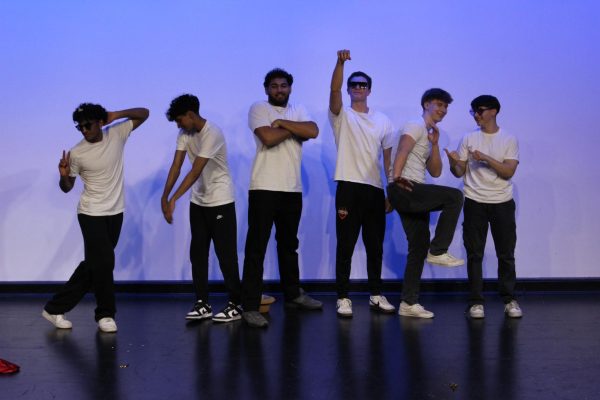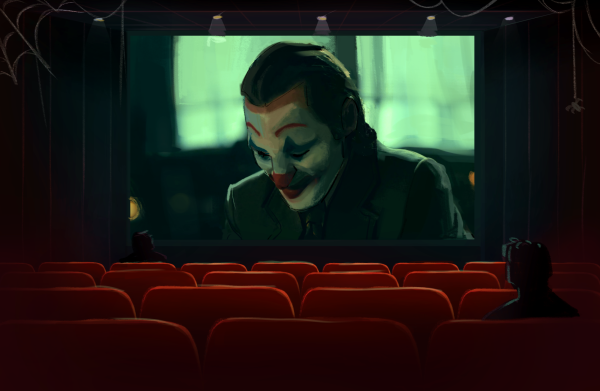SFMoMA has become artistic center of the Bay
San Francisco is known for being home to several acclaimed museums, but the San Francisco Museum of Modern Art should definitely be on any art lovers’ agenda the next time they travel to the city.
For Bay Area locals and students in particular, the museum has become an overwhelmingly popular destination.
Since its reopening after a three-year-long, $305 million renovation, thousands of people have visited the newly expanded museum, which hosts 14 large, impressive exhibits and several daily, interactive events for visitors.
Social media has gone wild with people taking aesthetically pleasing pictures in SFMoMA. Visitors can take a picture in front of the famous rainbow painting “Spectrum” by Ellsworth Kelly or Bruce Nauman’s “Life Death/Knows Doesn’t” iconic light sign.
One of the unique aspects of SFMoMA is that the art transforms from a simple framed painting to three-dimensional beauties. SFMoMA hosts two separate exhibits that display sculptures and architectural designs created by Tomȧs Saraceno and a group of British artists that drew together The Fisher Collection.
Tomȧs Saraceno’s exhibit “Stillness in Motion–Cloud Cities” shows eye-catching visuals that defy the commonly built world. His abstract architectural drawings and sculptures represent a possible Utopian city where humanity ceases to leave a carbon footprint.
The Fisher Collection exhibit “British Sculptors” offers challenging abstract sculptures and playfully tests an object’s limits, voids, and fluidity of motion. Visitors can move around them and take in the sculptures’ intriguing angles.
Both exhibits guarantee a refreshing perspective of art and cool photos.
SFMoMA also offers the “Pop, Minimal, and Figurative Art” exhibit, where visitors can be challenged with political and social issues through vivid colors. This exhibit hosts the commonly seen blue and pink light corner by Dan Flavin and “Figures with Sunset” by Roy Lichtenstein. The “Pop, Minimal, and Figurative Art” exhibit gives visitors a vast variety of artists, who each offer their own dialogue through their art.
Until March 12, the museum hosts the “Japanese Photography from Postwar to Now” exhibit, where the relationship between America and Japan is photographed post World War II. The exhibit gives a unique blend of American industrialization, current Japanese culture, and a rise in women post war era.
SFMoMA already has 14 breathtaking exhibits, but the museum is constantly refreshing and reviving itself. While some of the more iconic exhibits are mainstays, many others are in constant rotation and introduction, making every visit to the SFMoMA both exciting and new every time.
Jan. 21 saw the opening of the new exhibit titled “In the Beginning” by Diane Arbus. The exhibit was organized in collaboration with The Metropolitan Museum of Art in New York, and covers the first seven years (1956-62) of the career of renowned photographer Arbus.
This exhibit features more than 100 photographs taken over this timespan, digital portraits of people and performers from Times Square, Coney Island, and the Lower East Side. Arbus, a lifelong New Yorker herself, found her home city and its inhabitants a varied and rich subject to with which she dedicated herself to documenting.
This varied collection is a truly powerful and exemplary representation of twentieth century America and Americans, as well as the contemporary shifts in artistic medium that began to occur during this time period.
Of the many new additions and renovations that were part of the overhaul of the SFMoMA, none are perhaps more representative of the museum’s desire for innovation and modernity than the renovated Phyllis Wattis Theater, according to sfmoma.org.
From Feb. 9-26, the Phyllis Wattis Theater will be used to display the film series “Modern Cinema: Werner Herzog and the Ecstatic Truth,”a collaboration between the SFMoMA and the San Francisco Film Society. The series will explore, “the dynamic forces interacting between cinema’s past and present,” according to sfmoma.org.
Over the course of the series, 28 films will be shown, a number of them seminal works from Herzog himself. They include “Fata Morgana,” “Lessons of Darkness,” “Huie’s Sermon,” “Wheel of Time,” and “Pilgrimage.”
In addition to Herzog’s work, films from several other directors will be presented as well, tied together by some shared interests and focus, while still serving to reflect the creators’ own particular styles.
The other films will include Shirley Clarke’s “Portrait of Jason,” Les Blank’s “Burden of Dreams,” and Philip Gröning’s “Into Great Silence.” They will present a variety of subjects that offer a visionary and artistic take on realizations of nonfiction topics.



